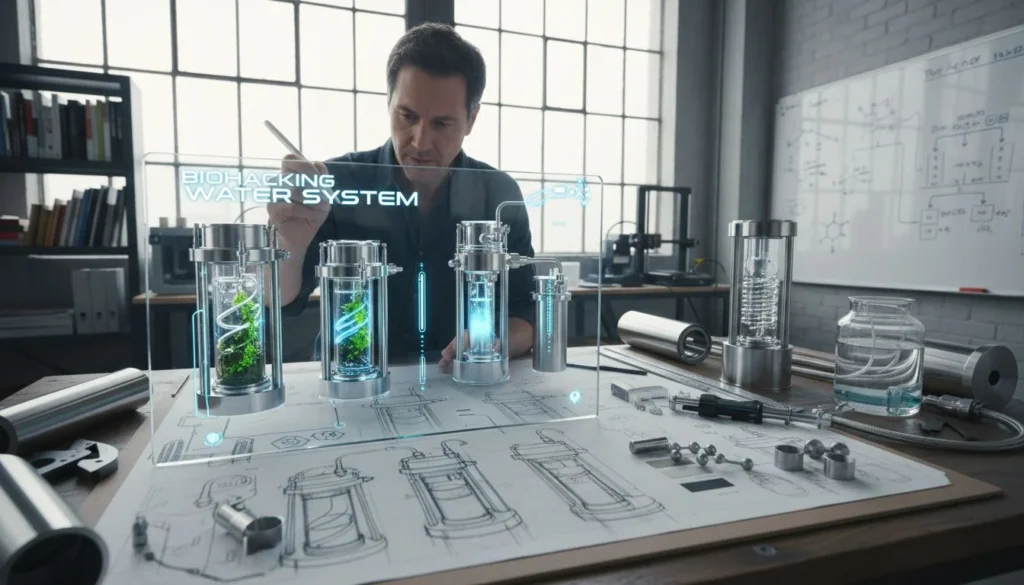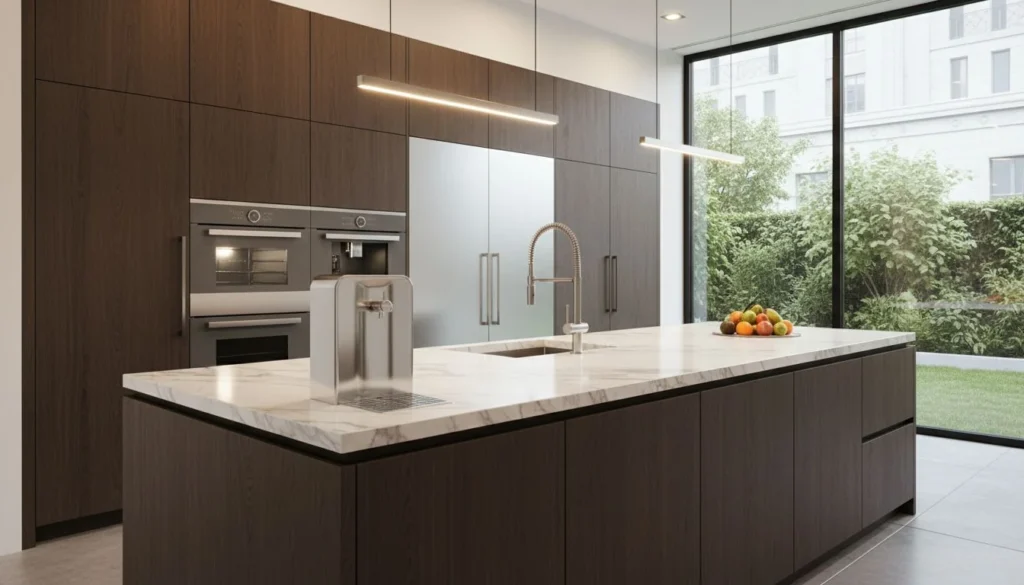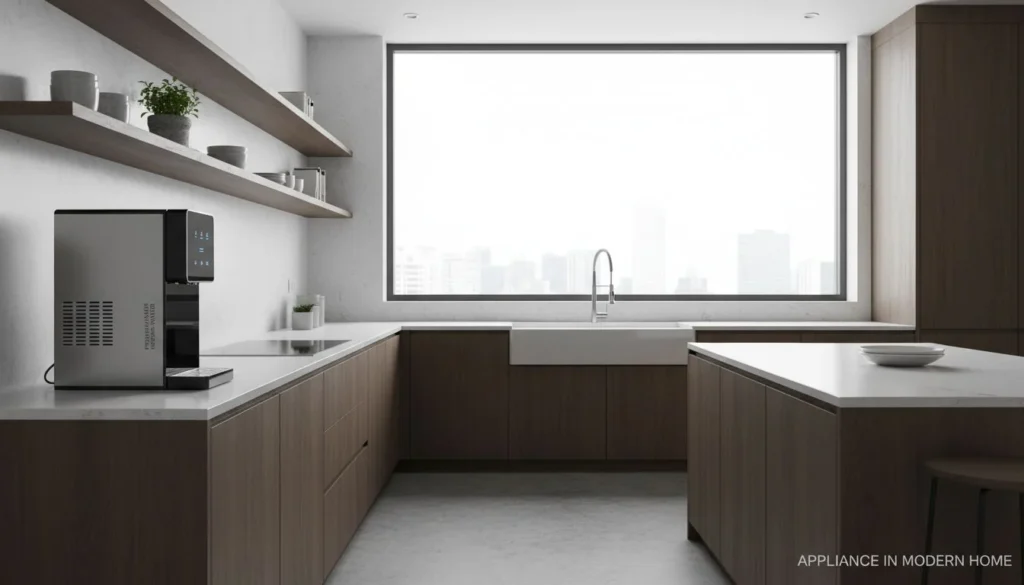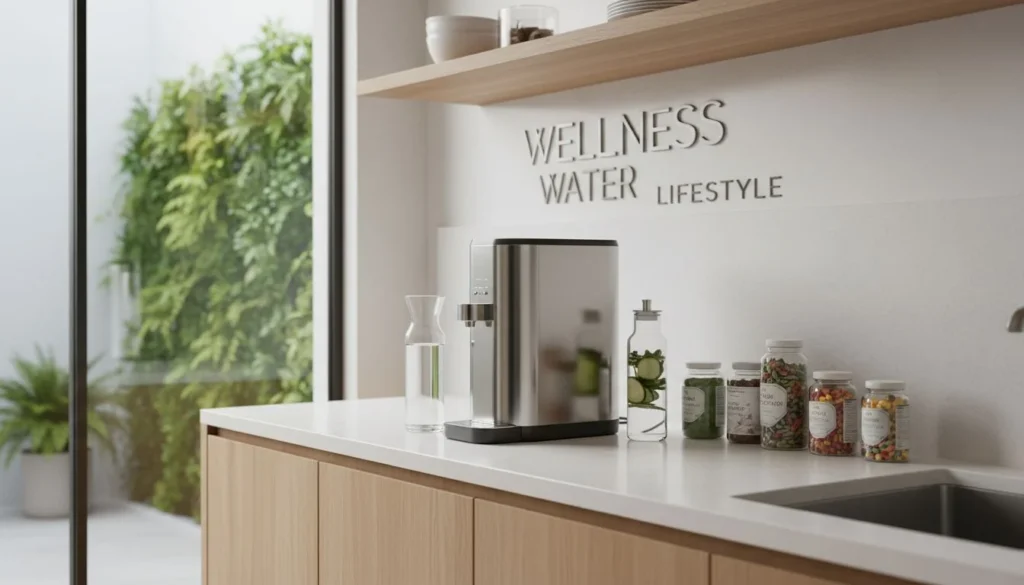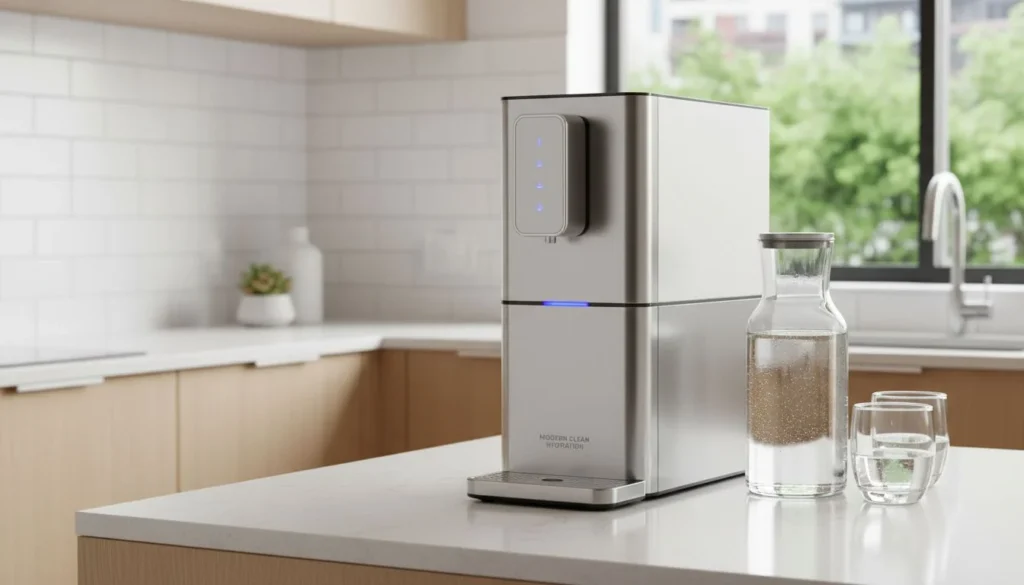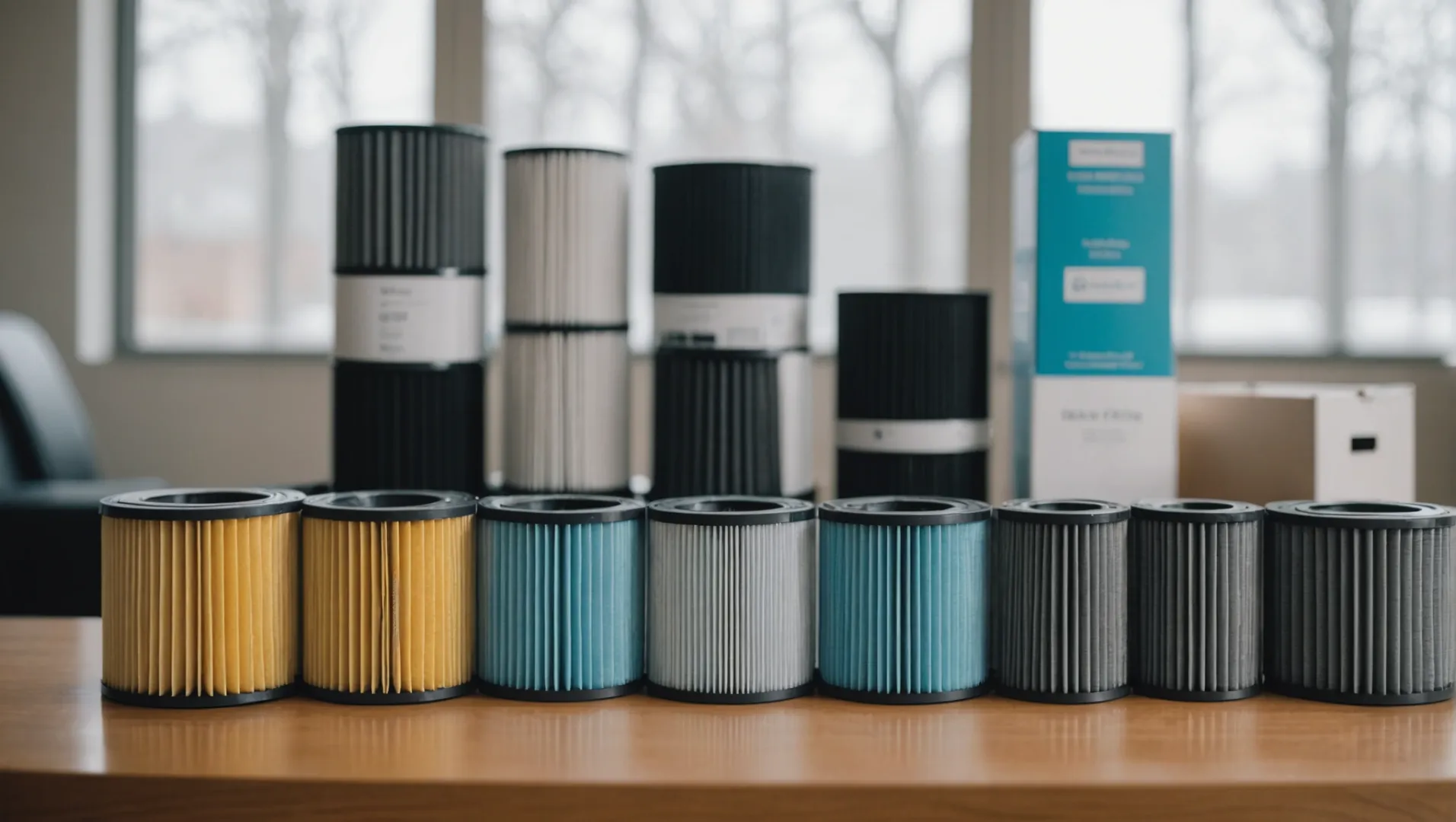
エアフィルターの世界をナビゲートするのは大変なことだが、その必要はない!
適切なエアフィルター媒体の選択は、対象とする汚染物質や対処するシナリオによって異なります。理解する MERV HEPAや活性炭のような定格とフィルタータイプは、効果的な空気浄化のための十分な情報に基づいて決定するのに役立ちます。
エアフィルターメディアの基本は不可欠ですが、ペットの臭い対策やカビのリスク管理など、具体的なシナリオを深く掘り下げると、それぞれに合ったソリューションが見えてきます。お客様のニーズに最適なフィルターを選ぶための実践的なアドバイスと専門家の見識について、引き続きお読みください。
HEPAフィルターは、0.3ミクロンの粒子を99.97%以上捕集します。真
HEPAフィルターは高効率で、ほとんどの微粒子を捕捉し、空気の質を改善します。
どのようなものなのか? MERV 格付けとその理由
の意義を理解する。 MERV 家庭やオフィスの環境に適したエアフィルターを選ぶには、視聴率が重要です。
MERV エアフィルターの粒子を捕獲する能力を評価するもので、1~20のレーティングがある。より高い MERV の数値は濾過がより細かいことを示し、ホコリや花粉、さらにはバクテリアのような小さな粒子を効果的に捕捉し、室内の空気の質を大幅に改善する。
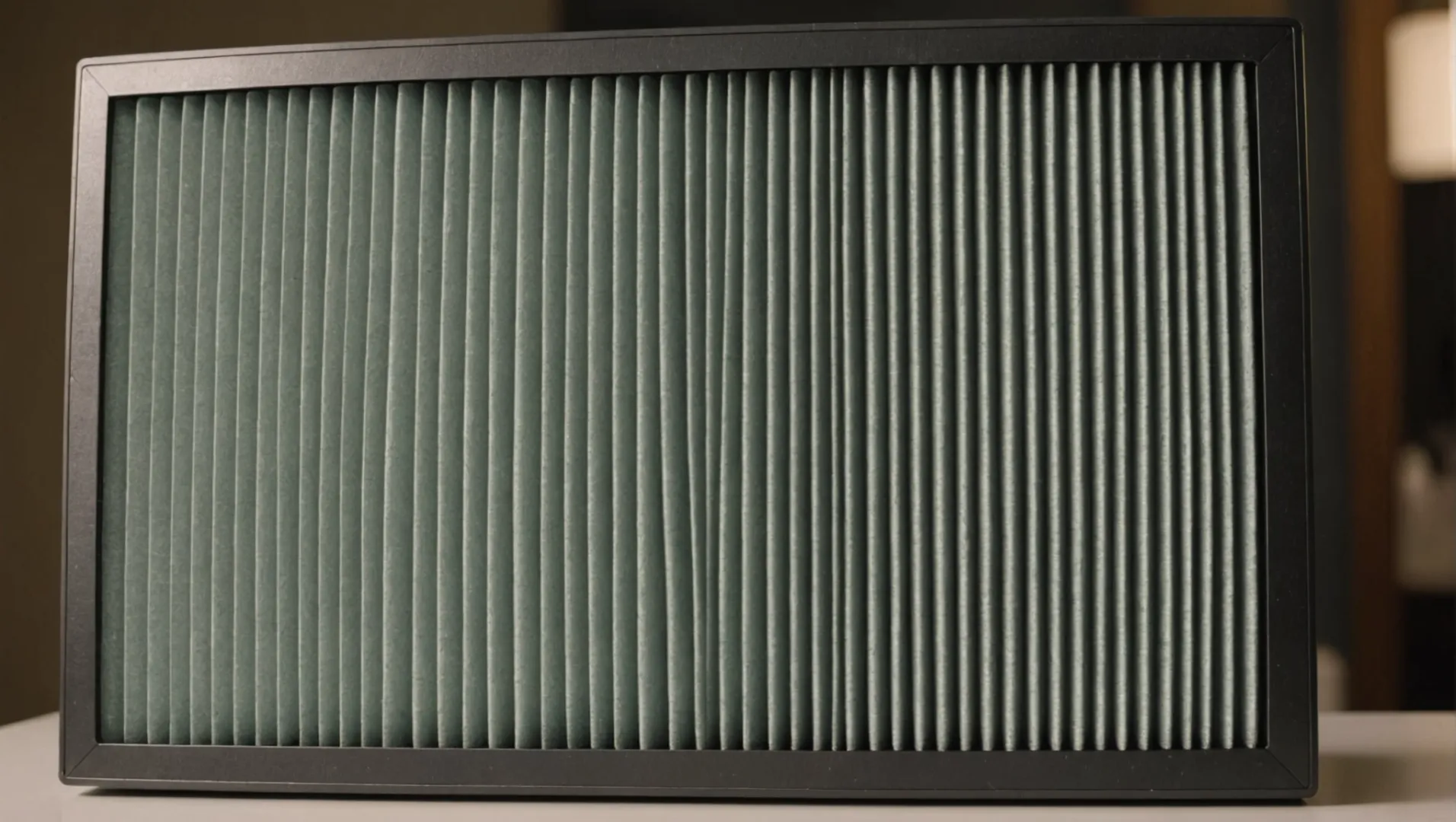
理解する MERV 格付け
MERV Minimum Efficiency Reporting Valueの略。エアフィルターの総合的な有効性を評価する基準である。1から20まであり、数値が高いほど小さな粒子を捕捉する能力が高いことを示す。例えば MERV 格付け1 のフィルターは、カーペットの繊維のような大きな粒子を捕捉することができ、13のフィルターは、ほこり、花粉、いくつかの細菌のような0.3ミクロンの粒子を捕捉することができます。
どのように MERV 格付けが大気の質に与える影響
適切な MERV の格付けは、室内の空気の質を大幅に向上させます。病院やアレルギー患者のいる家庭など、空気の清浄度が重要な環境では、より高い等級のフィルターが不可欠です。しかし、ろ過効率と空気の流れのバランスをとることが重要です。フィルターが制限されすぎると、空気の流れが妨げられ、HVACシステムの効率が低下します。
表 MERV 格付けと粒子タイプ
| MERV 評価 | キャプチャー |
|---|---|
| 1-4 | 花粉、ダニ |
| 5-8 | カビの胞子、ヘアスプレー |
| 9-12 | レジオネラ菌、鉛粉塵 |
| 13-16 | バクテリア、煙の粒子 |
| 17-20 | ウイルス、カーボンダスト |
の実践的応用 MERV 格付け
エアフィルターを選ぶ際には、ご使用の環境特有のニーズを考慮してください。例えば
- ペットのいる家庭 のフィルターが有効かもしれない。 MERV 格付け2 ペットのフケを捕獲するために、最低でも5.
- 幼児のいる家庭 細菌やアレルゲンを効果的に除去するために、13等級以上のフィルターを検討すべきである。
- 山火事の煙が出やすい地域 のフィルターが必要な場合がある。 MERV スモークの粒子を捕捉し、空気の質を改善するために、14以上の評価を得ている。
これらの点を理解することで、安全性と快適性の両方を確保しながら、特定のニーズに合わせた選択をすることができる。
MERVは1から20まである。真
MERV値は、エアフィルターの効率を1から20の尺度で測定する。
MERV評価が高いほど、HVACの効率は低下する。真
MERVの高いフィルターは空気の流れを制限し、HVACシステムに影響を与える可能性がある。
特定の汚染物質に対して、エアフィルターの種類はどのように作用するのか?
よりクリーンで健康的な室内空気を確保するために、さまざまなタイプのエアフィルターが特定の汚染物質にどのように対処しているかをご覧ください。
エアフィルターの種類は、特定の汚染物質と闘うように設計されています。HEPAフィルターはホコリやアレルゲンのような微粒子の捕集に優れ、活性炭フィルターは臭いや揮発性有機化合物(VOC)の除去に最適です。適切なフィルターを選ぶには、これらの機能を理解し、対処したい汚染物質に適合させる必要があります。

エアフィルターの基本を理解する
エアフィルターは、空気中の汚染物質を除去し、室内の空気の質を維持するために不可欠なものである。エアフィルターは、デザイン、素材、対象となる汚染物質によって大きく異なります。ここでは、特定の室内汚染物質に効果的に対処するために、さまざまなタイプのエアフィルターがどのように機能するのかを探ります。
HEPAフィルター微粒子の捕捉
高効率微粒子空気(HEPA)フィルターは、0.3ミクロンの微粒子を少なくとも99.97%捕集する能力で知られています。HEPAフィルターは、特に以下のような粒子に対して効果的です。 ほこり3花粉、カビの胞子、ペットのフケを除去します。このため、HEPAフィルターは、アレルギーを患う方や一般的な空気の質を改善したい方に最適です。
活性炭フィルター臭いと化学物質を吸着
活性炭フィルターは、非常に多孔質に処理された炭素材料で構成されています。このデザインにより、塗料や掃除用具などの家庭用品から発生するVOCを含むガスや臭いを吸収することができます。このフィルターは、ペットや喫煙者のいる家庭など、臭気対策が重要な環境に最適です。
抗菌フィルター微生物の繁殖を防ぐ
カビやバクテリアなどの微生物の繁殖を心配する人には、抗菌フィルターが特化した解決策を提供する。これらのフィルターには、有害な微生物を中和する抗菌剤で処理された素材が使用されていることが多く、カビに関連する健康問題のリスクを低減します。
紫外線(UV)フィルター:雑菌を中和する
UVフィルターは、紫外線を利用して細菌やウイルスなどの微生物を死滅または不活性化する。微粒子の除去には効果がないが、病院やインフルエンザの季節の家庭など、細菌にさらされることが懸念される環境では、空気浄化を強化する補助的なシステムとして役立つ。
最大限の効果を得るためのフィルターの組み合わせ
最近の空気清浄機の多くは、より幅広い汚染物質に対応するため、異なるフィルタータイプを組み合わせている。例えば、HEPAフィルターと活性炭フィルターの両方を搭載し、微粒子や悪臭から総合的に保護します。空気清浄機を選ぶ際には、特定のニーズに合わせてこのようなカスタマイズが可能なモデルを検討してください。
それぞれのフィルターが空気浄化に果たす役割を理解することで、どのオプションがお客様の環境問題に最も適しているか、十分な情報に基づいて判断することができます。
HEPAフィルターは、0.3ミクロンの粒子を99.97%捕集します。真
HEPAフィルターは微粒子を捕捉するように設計されており、高い空気品質を保証します。
活性炭フィルターはVOCには効果がない。偽
活性炭フィルターがVOCを効果的に吸収し、臭いや化学物質を低減します。
臭いが気になるペットオーナーに最適なフィルターは?
ペットの臭いはしつこく、管理が難しいものです。適切なエアフィルターを選ぶことで、爽やかな家庭環境を維持することができます。
ペットを飼っている人には、活性炭とHEPA 13を組み合わせたフィルターが最も効果的です。活性炭が臭いの分子を捕捉し、HEPA 13が空気中のペットのフケやバクテリアを捕捉することで、より清潔で臭いのない家を実現する。

臭気対策における活性炭の役割
活性炭フィルターは、ペットの臭いを抑えるのに非常に効果的です。臭いの原因となる分子を大きな表面積で捕捉し、ペットからの臭いを効果的に中和します。これは、複数のペットを飼っている家庭や、臭いの強い動物を飼っている家庭に特に有効です。
HEPA 13:ペットオーナーの必需品
HEPA 13フィルターは、ペットのフケやバクテリアなどの微小粒子を捕獲する能力で有名です。このレベルのろ過性能は、臭いとアレルゲンの両方を効果的に管理したいペットオーナーにとって極めて重要です。HEPA13と活性炭を組み合わせることで、ペットに関連する汚染物質に対する強力なコンビが誕生します。
基本的なフィルターの限界を理解する
基本的なフィルターは大きな粒子を除去することはできるが、臭いや小さなアレルゲンを管理するには不十分なことが多い。ペットの飼い主は、以下のような、特に臭気対策について言及されているフィルターを探すべきである。 活性炭技術4.
正しい空気清浄機サプライヤー選びの重要性
高性能製品を専門とする空気清浄機サプライヤーを選ぶことは非常に重要です。高出力のエアフローと低ノイズレベルがHEPAフィルターの効率を高め、徹底した浄化を実現します。サプライヤーを選ぶ際には、多様なフィルターオプションを提供する専門知識と、高いCADR(清浄空気供給率)を維持する能力を考慮してください。
フィルターを購入する際に考慮すべき要素
| 特徴 | 重要性 |
|---|---|
| 活性炭 | ペット臭の中和に欠かせない。 |
| HEPA 13 | ペットのフケやバクテリアを効果的に捕獲。 |
| 騒音レベル | 低騒音で居住空間の快適性を確保。 |
| 気流 | 効率的なフィルタリングには大風量が必要だ。 |
新鮮な家を維持するための実践的なヒント
適時のフィルター交換や清掃など、空気清浄機の定期的なメンテナンスは、その効率を最大限に高めます。また、換気をよくし、ペットのいる場所を定期的に掃除することも、エアフィルターの使用を補完するために有効です。
活性炭フィルターがペットの臭いを効果的に中和します。真
活性炭が臭いの分子を捕捉し、ペットの臭いを中和します。
ペットの臭いを抑えるには、基本的なフィルターで十分だ。偽
基本的なフィルターには、高度なものに比べて臭いを抑える機能がない。
家庭で赤ちゃんのために安全な空気環境を確保するには?
赤ちゃんの健康のためには、安全な環境を作ることが重要であり、空気の質は重要な要素です。しかし、赤ちゃんが呼吸する空気が清潔で安全であることを、親はどうすれば確認できるのでしょうか?
家庭で赤ちゃんのために安全な空気環境を確保するには、PM2.5粒子を効果的に除去するHEPA13または14フィルター付きの空気清浄機を使用する必要があります。さらに、換気をよくし、屋内での喫煙を避け、定期的に表面を掃除することで、健康的な室内環境を維持することができます。
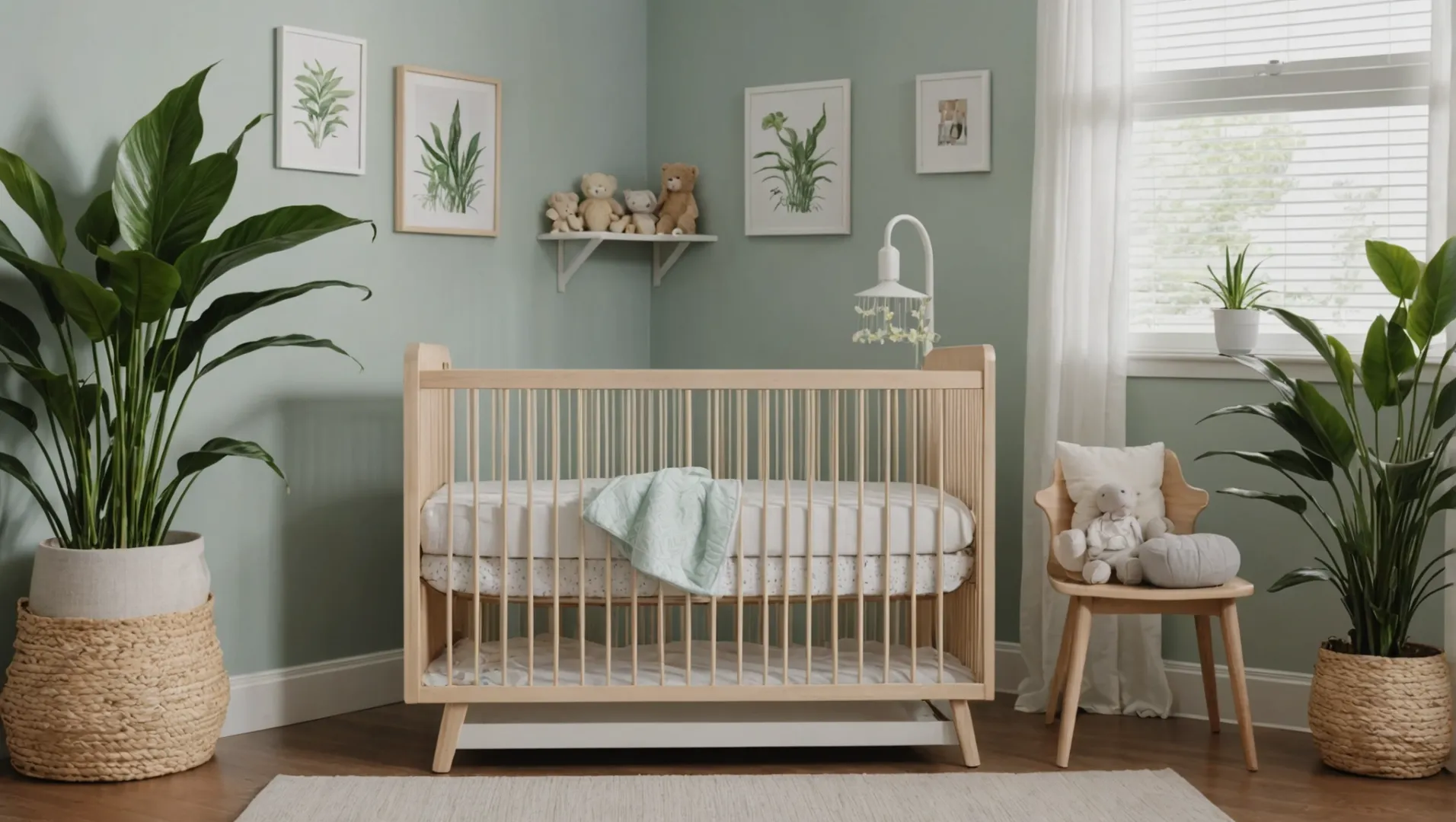
大気汚染物質と赤ちゃんへの影響を理解する
赤ちゃんは呼吸器系が発達途上にあるため、空気中の汚染物質の影響を特に受けやすい。一般的な室内汚染物質には、ダニ、カビの胞子、ペットのフケ、PM2.5粒子などがあり、喘息やアレルギーなどの呼吸器系の問題を悪化させる可能性がある。これらの汚染物質を理解することで、親はその影響を軽減するために的を絞った行動をとることができる。
空気浄化におけるHEPAフィルターの役割
高効率微粒子空気(HEPA)フィルターは、微小粒子を捕捉する能力で有名です。PM2.5を心配するご両親には、HEPA 13またはHEPA 14フィルターが推奨されます。HEPAフィルターは、0.3ミクロンの空気中の微粒子を99.97%まで捕捉することができます。このため、家庭内の有害な汚染物質の存在を減らすのに非常に効果的です。
安全な空気を確保するための追加措置
一方 HEPAフィルター5 は重要な役割を果たすが、それはきれいな空気を確保するためのより広範な戦略の一部である:
- 良好な換気を保つ: 外気が許せば窓を開け、家の換気をよくする。
- 定期的なクリーニング: 埃の堆積を最小限に抑えるため、表面の埃を払い、HEPA搭載の掃除機で吸引する。
- 屋内での喫煙を避ける: 煙には有害な化学物質が多数含まれており、喫煙をやめた後も空気中に長く残ることがある。
- 観葉植物: 彼岸花や平和の百合のような特定の植物は、汚染物質を吸収することで、室内の空気の質を自然に改善することができる。
正しい空気清浄機の選択
空気清浄機を選ぶ際には、部屋の広さや騒音レベルなどを考慮しましょう。CADR(Clean Air Delivery Rate:清浄空気送出率)の高い機種は、過度の騒音を発生させることなく効率的に空気を浄化します。トップクラスのモデルのレビューや比較を参考にすることも、選択の際に役立ちます。
モニタリングとニーズに基づく調整
最後に、室内空気品質モニターを使って汚染物質レベルを追跡する。こうすることで、保護者は必要に応じて対策を調整し、子どもにとって安全な呼吸環境を効果的に維持することができる。また、最新の研究や専門家のアドバイスを定期的に見直すことで、室内空気の質を改善するための新たな知見を得ることもできる。
HEPA 13フィルターは99.97%の粒子を捕集します。真
HEPA 13フィルターは、0.3ミクロンの粒子を捕捉するように設計されています。
屋内喫煙が赤ちゃんの空気の質に影響を与えることはない。偽
屋内喫煙は有害な化学物質を発生させ、それが残留して空気の質に影響を与える。
結論
適切なエアフィルター・メディアを選ぶには、お客様固有のニーズを理解する必要があります。知識を身につけ、十分な情報に基づいた選択をすることで、今すぐ室内の空気の質を高めましょう。
-
MERV値がフィルターの有効性をどのように定義しているかを学びましょう:最小効率報告値(MERV)は、0.3~10ミクロン(μm)の大きな粒子を捕獲するフィルターの能力を報告します。 ↩
-
ペットのフケを捕獲するための最適なMERVレーティングをご覧ください。ただし、ペットを飼っている方には、ペットのフケのような小さな粒子を捕獲できる13などのMERVレーティングの高いフィルターを選ぶことをお勧めします。 ↩
-
埃やアレルゲンを捕捉するHEPAの効率について学びましょう:このタイプのエアフィルターは、理論上少なくとも99.97%のホコリ、花粉、カビ、バクテリア、および0.3 ... ↩
-
活性炭が臭いを効果的に中和する方法をご紹介します:煙や化学物質の除去に役立ちます:活性炭フィルター搭載の空気清浄機は、煙や化学物質を除去するのに優れています。 ↩
-
HEPAフィルターが乳幼児の空気を効果的に清浄する方法をご覧ください:ほとんどの空気清浄機は、いくつかの注意事項を守れば、赤ちゃんのそばでもまったく問題ありません。空気清浄機は空気中の汚れを取り除きます。 ↩


